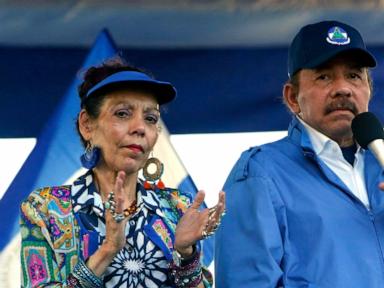ARTICLE AD BOX
It’s been a decade since the U.S. and Europe pushed the world to embrace a historic agreement to stop the planet’s runaway warming.
The deal among nearly 200 nations offered a potential “turning point for the world,” then-U.S. President Barack Obama said. Eventually, almost every country on Earth signed the 2015 Paris Agreement, a pact whose success would rest on peer pressure, rising ambition and the economics of a clean energy revolution.
But 10 years later, the actions needed to fulfill those hopes are falling short.
The United States has quit the deal — twice. President Donald Trump is throttling green energy projects at home and finding allies to help him undermine climate initiatives abroad, while inking trade deals that commit countries to buying more U.S. fossil fuels.
Europe remains on track to meet its climate commitments, but its resolve is wavering, as price-weary voters and the rise of far-right parties raise doubts about how quickly the bloc can deliver its pledge to turn away from fossil fuels.
Paris has helped ingrain climate change awareness in popular culture and policy, led countries and companies to pledge to cut their carbon pollution to zero and helped steer a wave of investments into clean energy. Scientists say it appears to have lessened the odds of the most catastrophic levels of warming.
On the downside, oil and gas production hasn’t yet peaked, and climate pollution and temperatures are still rising — with the latter just tenths of a degree from the tipping point agreed in Paris. But the costs of green energy have fallen so much that, in most parts of the world, it’s the cheapest form of power and is being installed at rates unthinkable 10 years ago.
World leaders and diplomats who are in Brazil starting this week for the United Nations’ annual climate talks will face a test to stand up for Paris in the face of Trump’s opposition while highlighting that its goal are both necessary and beneficial.
The summit in the Amazonian port city of Belém was supposed to be the place where rich and poor countries would celebrate their progress and commit themselves to ever-sharper cuts in greenhouse gas pollution.
Instead, U.S. contempt for global climate efforts and a muddled message from Europe are adding headwinds to a moment that is far more turbulent than the one in which the Paris Agreement was adopted.
Some climate veterans are still optimists — to a point.
“I think that the basic architecture is resistant to Trump’s destruction,” said John Podesta, chair of the board of the liberal Center for American Progress, who coordinated climate policy under Obama and former President Joe Biden. But that resistance could wilt if the U.S. stays outside the agreement, depriving the climate movement of American leadership and support, he said.
“If all that’s gone, and it’s gone for a long time, I don’t know whether the structure holds together,” Podesta added.
Other climate diplomats say the cooperative spirit of 2015 would be hard to recreate now, which is why acting on Paris is so essential.
“If we had to renegotiate Paris today, we’d never get the agreement that we had 10 years ago,” said Rachel Kyte, the United Kingdom’s special climate representative.
“But we can also look to these extraordinary data points, which show that the direction of travel is very clear,” she said, referring to growth of clean energy. “And most people who protect where their money is going to be are interested in that direction of travel.”
The Paris paradox
One thing that hasn’t faded is the business case for clean energy. If anything, the economic drivers behind the investments that Paris helped unleash have surpassed even what the Paris deal’s authors anticipated.
But the political will to keep countries driving forward has stalled in some places as the United States — the world’s largest economy, sole military superpower and historically biggest climate polluter — attacks its very foundation.
Trump’s attempts to undermine the agreement, summed up by the 2017 White House slogan “Pittsburgh, not Paris,” has affected European ambitions as well, French climate diplomat Laurence Tubiana told reporters late last month.
“I have never seen such aggressivity against national climate policy all over because of the U.S.,” said Tubiana, a key architect of the Paris Agreement. “So we are really confronted with an ideological battle, a cultural battle, where climate is in that package the U.S. government wants to defeat.”
 President Donald Trump has called efforts to fight climate change a “green new scam.” | Edward M. Pio Roda/EPA
President Donald Trump has called efforts to fight climate change a “green new scam.” | Edward M. Pio Roda/EPAThe White House said Trump is focused on developing U.S. oil and engaging with world leaders on energy issues, rather than what it dubs the “green new scam.” The U.S. will not send high-level representatives to COP30.
“The Green New Scam would have killed America if President Trump had not been elected to implement his commonsense energy agenda,” said Taylor Rogers, a spokesperson. “President Trump will not jeopardize our country’s economic and national security to pursue vague climate goals that are killing other countries.”
Trump is not the only challenge facing Paris, of course.
Even under Obama, the U.S. insisted that the Paris climate pollution targets had to be nonbinding, avoiding the need for a Senate ratification vote that would most likely fail.
But unlike previous climate pacts that the U.S. had declined to join, all countries — including, most notably, China — would have to submit a pollution-cutting plan. The accord left it up to the governments themselves to carry out their own pledges and to push laggards to do better. An unusual confluence of political winds helped drive the bargaining.
Obama, who was staking part of his legacy on getting a global climate agreement, had spent the year leading up to Paris negotiating a separate deal with China in which both countries committed to cutting their world-leading pollution.
France, the host of the Paris talks, was also determined to strike a worldwide pact.
In the year that followed, more than 160 countries submitted their initial plans to tackle climate change domestically and began working to finish the rules that would undergird the agreement.
“The Paris Agreement isn’t a machine that churns out ambition. It basically reflects back to us the level of ambition that we have agreed to … and suggests what else is needed to get back on track,” said Kaveh Guilanpour, vice president for international strategies at the Center for Climate and Energy Solutions and a negotiator for the United Kingdom during the Paris talks. “Whether countries do that or not, it’s essentially then a matter for them.”
Catherine McKenna, Canada’s former environment minister and a lead negotiator of the Paris Agreement’s carbon crediting mechanism, called the deal an “incredible feat” — but not a self-executing one.
“The problem is now it’s really up to countries as well as cities, regions, companies and financial institutions to act,” she said. “It’s not a treaty thing anymore — it’s now, ‘Do the work.’”
When green turns gray
Signs of discord are not hard to find around the globe.
China is tightening its grip on clean energy manufacturing and exports, ensuring more countries have access to low-cost renewables, but creating tensions in places that also want to benefit from jobs and revenue from making those goods and fear depending too much on one country.
Canadian Prime Minister Mark Carney, a former United Nations climate envoy, eliminated his country’s consumer carbon tax and is planning to tap more natural gas to toughen economic defenses against the United States.
The European Union spent the past five years developing a vast web of green regulations and sectoral measures, and the bloc estimates that it’s roughly on track to meet those goals. But many of the EU’s 27 governments — under pressure from the rising far right, high energy prices, the decline of traditional industry and Russia’s war against Ukraine — are now demanding that the EU reevaluate many of those policies.
Still, views within the bloc diverge sharply, with some pushing for small tweaks and others for rolling back large swaths of legislation.
“Europe must remain a continent of consistency,” French President Emmanuel Macron said after a meeting of EU leaders in October. “It must step up on competitiveness, but it must not give up on its [climate] goals.”
 French President Emmanuel Macron has urged European leaders to pursue climate policies. | Thomas Traasdahl/EPA
French President Emmanuel Macron has urged European leaders to pursue climate policies. | Thomas Traasdahl/EPAPoland’s Prime Minister Donald Tusk, in contrast, said after the same meeting that he felt vindicated about his country’s long-standing opposition to the EU’s green agenda: “In most European capitals, people today think differently about these exaggerated European climate ambitions.”
Worldwide, most countries have not submitted their latest carbon-cutting plans to the United Nations. While the plans that governments have announced mostly expand on their previous ones, they still make only modest reductions against what is needed to limit Earth’s warming since the preindustrial era to 1.5 degrees Celsius.
Exceeding that threshold, scientists say, would lead to more lives lost and physical and economic damage that would be ever harder to recover from with each tenth of a degree of additional warming.
The U.N.’s latest report showing the gap between countries’ new pledges and the Paris targets found that the world is on track for between 2.3 and 2.5 degrees of warming, a marginal difference from plans submitted in 2020 that is largely canceled out when the U.S. pledge is omitted. Policies in place now are pointing toward 2.8 degrees of warming.
“We need unprecedented cuts to greenhouse gas emissions now in an ever-compressing timeframe and amid a challenging geopolitical context,” said Inger Andersen, executive director of the U.N. Environment Programme.
But doing so also makes sense, she added. “This where the market is showing that these kind of investments in smart, clean and green is actually driving jobs and opportunities. This is where the future lies.”
U.N. Secretary-General António Guterres said in a video message Tuesday that overshooting the 1.5-degrees target of Paris was now inevitable in the coming years imploring leaders to rapidly roll out renewables and stop expanding oil, gas and coal to ensure that overshoot was short-lived.
“We’re in a huge mess,” said Bill Hare, a longtime climate scientist who founded the policy institute Climate Analytics.
 The COP30 logo is seen in front of the central building for the United Nations climate conference in Belém, Brazil. | Sebastiao Moreira/EPA
The COP30 logo is seen in front of the central building for the United Nations climate conference in Belém, Brazil. | Sebastiao Moreira/EPAGreenhouse gas pollution hasn’t fallen, and action has flat lined even as climate-related disasters have increased.
“I think what’s upcoming is a major test for the Paris Agreement, probably the major test. Can this agreement move forward under the weight of all of these challenges?” Hare asked. “If it can’t do that, governments are going to be asking about the benefits of it, frankly.”
That doesn’t mean all is lost.
In 2015, the world was headed for around 4 degrees Celsius of warming, an amount that researchers say would have been devastating for much of the planet. Today, that projection is roughly a degree Celsius lower.
“I think a lot of us in Paris were very dubious at the time that we would ever limit warming to 1.5,” said Elliot Diringer, a former climate official who led the Center for Climate and Energy Solutions’ international program during the Paris talks.
“The question is whether we are better off by virtue of the Paris Agreement,” he said. “I think the answer is yes. Are we where we need to be? Absolutely not.”
Green technology defying expectations
In addition, the adoption of clean energy technology has moved even faster than projected — sparking what one climate veteran has called a shift in global climate politics.
“We are no longer in a world in which only climate politics has a leading role and a substantial role, but increasingly, climate economics,” said Christiana Figueres, executive secretary of the United Nations Framework Convention on Climate Change in 2015. “Yes, politics is important; no longer as important as it was 10 years ago.”
Annual solar deployment globally is 15 times greater than the International Energy Agency predicted in 2015, according to a recent analysis from the Energy and Climate Intelligence Unit, a U.K. nonprofit.
Renewables now account for more than 90 percent of new power capacity added globally every year, BloombergNEF reported. China is deploying record amounts of renewables and lowering costs for countries such as Brazil and Pakistan, which has seen solar installations skyrocket.
Even in the United States, where Trump repealed many of Biden’s tax breaks and other incentives, BloombergNEF predicts that power companies will continue to deploy green sources, in large part because they’re often the fastest source of new electricity.
Costs for wind and batteries and falling, too. Electric vehicle sales are soaring in many countries, thanks in large part to the huge number of inexpensive vehicles being pumped out by China’s BYD, the world’s largest EV-maker.
Worldwide clean energy investments are now twice as much as fossil fuels spending, according to the International Energy Agency.
“Today, you can actually talk about deploying clean energy technologies just because of their cost competitiveness and ability to lower energy system costs,” said Robbie Orvis, senior director of modeling and analysis at the research institution Energy Innovation. “You don’t actually even have to say ‘climate’ for a lot of them, and that just wasn’t true 10 years ago.”
The economic trends of the past decade have been striking, said Todd Stern, the U.S. climate envoy who negotiated the Paris Agreement.
“Paris is something that was seen all over the world, seen by other countries, seen in boardrooms, as the first time in more than 20 years when you finally got heads of government saying, ‘Yes, let’s do this,’” he said. “And that’s not the only reason why there was tremendous technological development, but it sure didn’t hurt.”
Still, limits exist to how far businesses can take the clean energy transition on their own.
“You need government intervention of some kind, whether that’s a stick or a carrot, to push the economy towards a low-carbon trajectory,” said Andrew Wilson, deputy secretary general of policy at the International Chamber of Commerce. “If governments press the brakes on climate action or seriously start to soft pedal, then it does have a limiting effect.”
Brazil, the host of COP30, says it wants to demonstrate that multilateralism still works and is relevant to peoples’ lives and capable of addressing the climate impacts communities around the world are facing.
But the goal of this year’s talks might be even more straightforward, said Guilanpour, the former negotiator.
“If we come out of COP30 demonstrating that the Paris Agreement is alive and functioning,” he said, “I think in the current context, that is pretty newsworthy of itself.”
Nicolas Camut in Paris, Zi-Ann Lum in Ottawa, Karl Mathiesen in London and Zia Weise in Brussels contributed to this report.
.png)
 1 day ago
1
1 day ago
1








 English (US)
English (US)